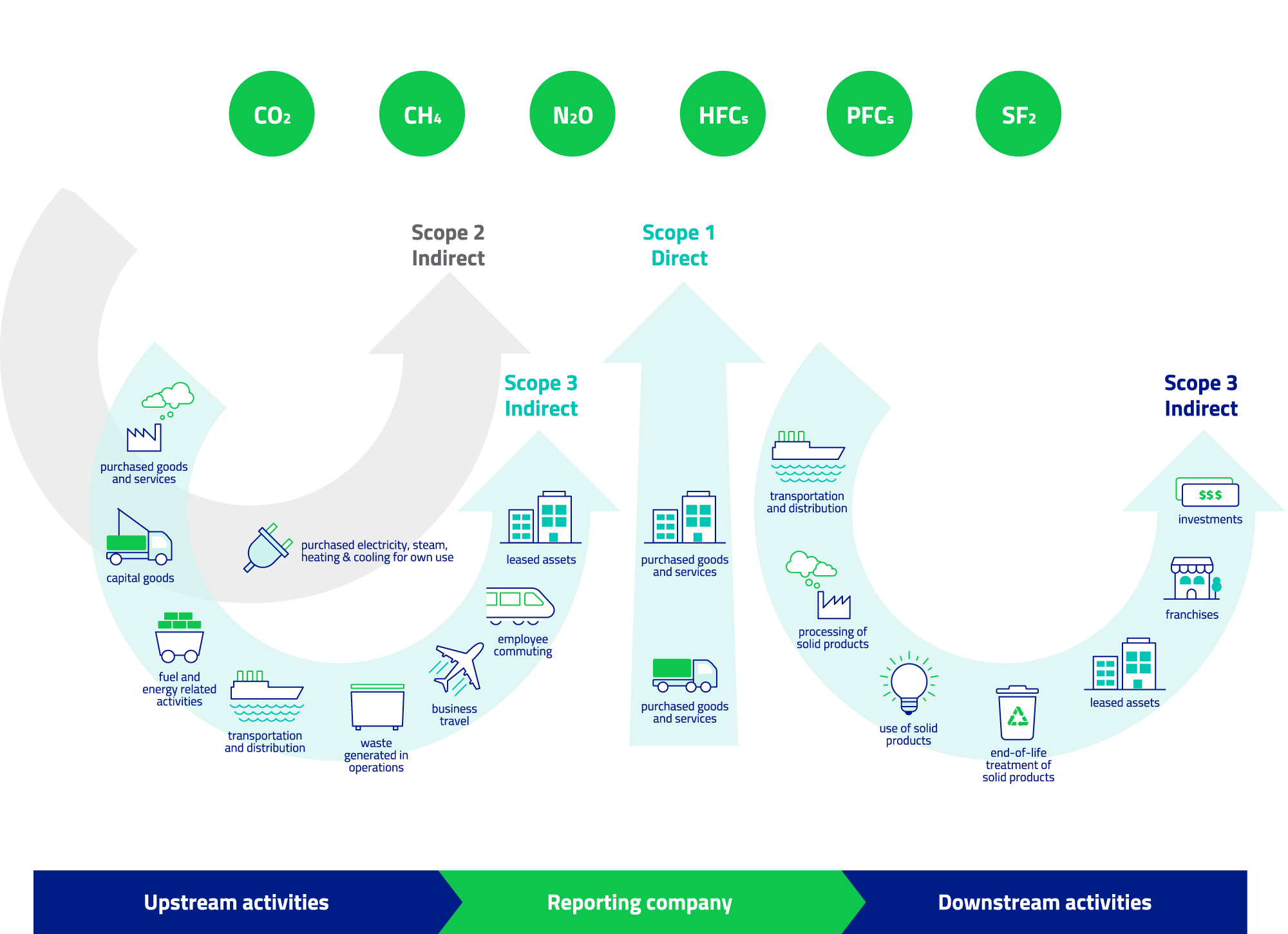Reduce GHG Emissions
with Green Instruments

HOW CAN MY BUSINESS REDUCE GHG EMISSIONS?
Apart from actively eliminating or reducing GHG emissions, depending on your business, your company can elect to purchase various internationally recognised instruments, such as renewable energy certificates or carbon credits, to validate the use of green energy and offset GHG emissions.

Carbon Credits
One of the most widely accepted certification standards for carbon credits is the Voluntary Carbon Standard (VCS).
Under the VCS programme, certified projects where GHG emissions are avoided or reduced are issued unique carbon credits known as Verified Carbon Units (VCU), where each VCU represents one metric tonne (MT) of GHG reduced or removed from the atmosphere. Examples of such projects include, but are not limited to, forestry, renewable energy and biomass-based power generation.
By retiring VCUs, organisations can claim the environmental attributes associated and have the right to report having offsetted their GHG emissions or utilised carbon neutral electricity (provided volume of VCUs retired match the total volume of emissions).
VCUs are valid for all Scope 1, 2 and 3 emissions.

Renewable Energy Certificates
International Renewable Energy Certificates (I-REC) are recognised by the Greenhouse Gas Protocol Scope 2 Guidance as a tool to document electricity consumption from renewable energy sources outside of Europe and North America.
Each I-REC represents proof that 1 megawatt per hour (MWh) of renewable energy has been produced and embodies the environmental benefits that amount of renewable energy has generated. Renewable energy projects include those such as solar, wind and hydro. By redeeming I-RECs, organisations can claim the use of renewable energy or zero-emission electricity (provided volume of I-RECs retired match the total volume of electricity consumed).
Another type of renewable energy certificate is the Tradable Instrument for Global Renewables (TIGR). This is currently issued by various solar projects in Singapore with several other projects under development in various Southeast Asian countries. TIGRs possess similar attributes as I-RECs and work in essentially the same way. I-RECs and TIGRs are valid for Scope 2 emissions.

WHAT ARE GREENHOUSE GASES?
GHG, or greenhouse gases, are gases that trap heat in the atmosphere.
The GHG Protocol Corporate Standard divides a company’s emissions into direct and indirect emissions:

Direct emissions
Are emissions from sources that are owned or controlled by the reporting company.

Indirect emissions
Are emissions that are a consequence of the activities of the reporting company, but these occur at sources owned or controlled by another company.
Emissions are further divided into three scopes:

Scope 1
Emissions from operations that are owned or controlled by the reporting company such as those from combustion in boilers, furnaces, vehicles, or emissions from chemical production process equipment.

Scope 2
Emissions from the generation of purchased or acquired electricity, steam, heating, or cooling consumed by the reporting company.

Scope 3
All indirect emissions (not included in Scope 2) that occur in the value chain of the reporting company, including both upstream and downstream emissions such as those from the production of purchased products, transportation of purchased products, or use of sold products.

Interested to know more?
Leave us your details and we’ll get in touch with you soon.


TALK TO US INSTEAD
If you’re unsure about something, just drop us a line.
We’re happy to help you in any way.
